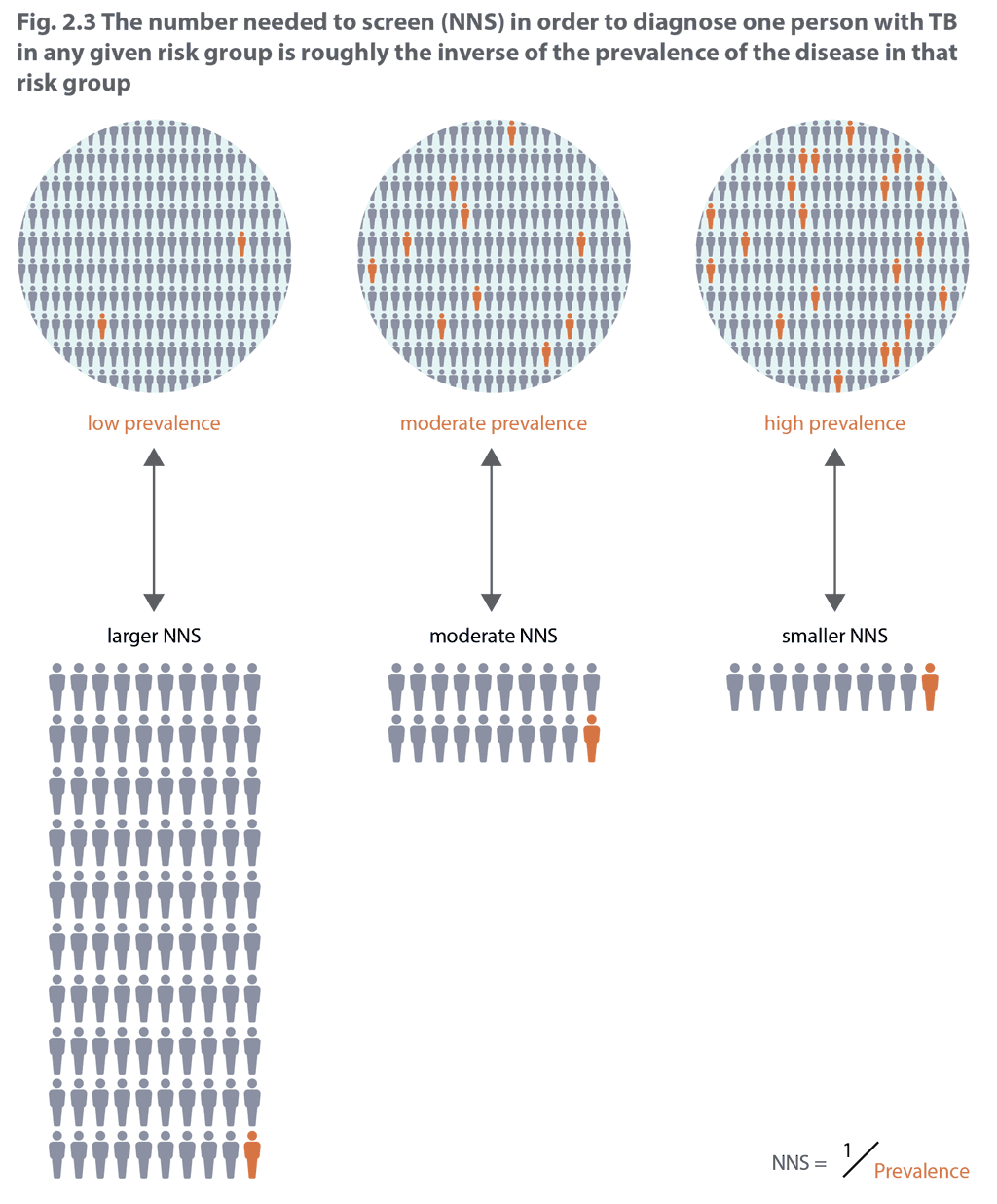Book traversal links for 2.4.5 Number needed to screen to detect a person with TB
The NNS to identify one person with confirmed TB in a specific risk group is the inverse of the prevalence of detectable TB in that risk group, assuming 100% sensitivity of the screening and diagnostic tools being used. If a given risk group has a very low prevalence of detectable TB, many people will have to be screened in order to find one case of TB, and this will require a high NNS; however, if a given risk group has a high prevalence of TB that can be detected by the screening and diagnostic tools being used, fewer people will have to be screened for each case detected, resulting in a lower NNS. Fig. 2.3 illustrates the general concept of the NNS in a risk group.

At a prevalence of 200/100 000 population, the NNS is at least 500 (in practice, it will be higher when the accuracy of the screening is suboptimal). The prevalence of undetected TB in the general population is often less than 200/100 000, even in countries with a high burden of TB; therefore, screening the general population is not usually cost–effective.
The NNS is a rough indicator of cost–effectiveness and of effort. Comparison of the NNS of risk groups provides a measure of relative cost–effectiveness if it can be assumed that the cost of screening and treatment and the benefits of early treatment are the same for all risk groups. This assumption is, however, rarely valid in practice. For example, an NNS of 50 for contact investigation might mean that a person visits 12 different houses over 2 days. In contrast, in another situation, an NNS of 150 might be found by verbal screening in a slum area where that many people can be verbally screened in 4 h. Clearly, the effort and cost of screening are higher in the first example, even though the NNS is lower.
To guide prioritization of risk groups, the NNS should be estimated, even approximately, for each group being considered for screening, and it should be specific to the screening algorithms being used. This process is described in detail in Chapter 3.
 Feedback
Feedback